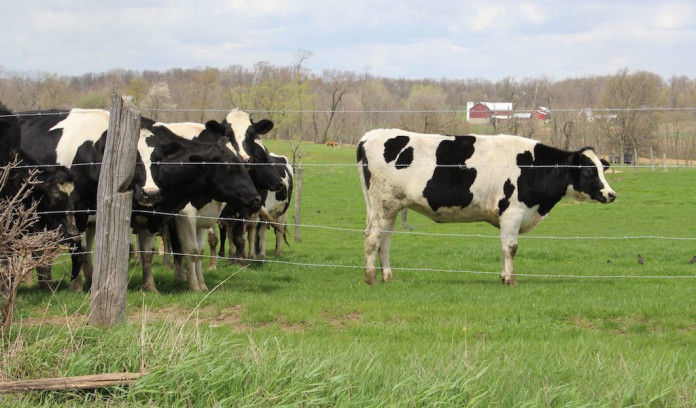Is the onset of spring trending early in 2023? This partly depends on how you measure it and — spoiler alert! — the answer for many of us is probably yes.
The National Phenology Network which tracks cloned specimens of lilac and honeysuckle throughout the nation will show you that much of the Eastern U.S. is experiencing spring leaf out as much as 10-20 days early. Spring onset in Pittsburgh, Pennsylvania, was measured at 17 days early March 20, and Cleveland, Ohio, was measured at six days early March 27. Boston, Massachusetts recorded nine days early March 27.
What do growing degree days tell us? Where I live, we are pushing well above normal. My location on March 28 records 143 GDD’s since Jan. 1 on the OSU GDD calculator compared to a 20-year average of 97. By comparison, 2012, which was a big drought year, recorded 251 GDD’s, which is the 20-year high. This generally means we have had more heat than normal, especially during the month of February.
As you move north and east, this experience may have been less dramatic. Unfortunately, I do not readily find a specific pasture management degree day tracker. In fact, it may not even be a recommended practice for pasture management.
Our friendly neighbors in the turf industry have this space covered pretty well, however, and that may be of interest to look at. They tend to focus on bluegrass and crabgrass behavior and some key disease and insect pests.
I can tell you that at this moment, for my location, the Michigan State GDD tracker suggests it is optimal timing to apply a crabgrass pre-emergent to the lawn. Will I do that? If history is any indication, no. That’s just not how I roll. But I know for some out there, it’s time get moving.
It’s relatively straightforward to find growing degree trackers of all sorts for corn, turf, orchard and insect pest management. There are growing degree recommendations for alfalfa management. However, I see a very clear recommendation to not use growing degree day methods in a mixed grass/alfalfa stand when pure alfalfa management is the goal.
Ultimately, many of us make a lot of pasture judgements just by observing the physical changes in the sward as the season progresses and timing our decisions by growth stage or field condition.
What’s the point of growing degree days and knowing that a lilac is leafing out early? Simply put, it means we are in a season where we might be into pastures and pasture management earlier than normal. Time will tell, and frost can hit anytime until Memorial Day, but nothing about the spring I am seeing in Southeast Ohio says “slow.” The only slow part will be convincing ourselves to stay patient and not rush into things too soon.
Precipitation
We can talk precipitation also. Mostly, the headlines I see are that most nationwide drought pressure has eased or is easing, though not all: we see you Kansas and Oklahoma! All winter, I have heard some version that we are moving into and “El Nino” pattern that will determine many of our near future weather trends.
I can report that the river flooded its banks as usual this spring during the most recent rain pattern. But what really will make a difference in the next month? I will go ahead and wager that the point at which your pasture will jump and really start to take off will depend on soil temperature. And, given everything we have experienced so far, it’s just around the corner.
Our local soil temperatures are hovering just below 50 degrees. Walk out your back door with a meat thermometer and place it in the ground and get data, just like that. Biology is in action at all times, but the optimal temperature threshold for many organisms is broadly between 50 and 85 F. To go lower, biologic processes slow down at higher temperatures heat stress impacts productivity.
Nitrogen application
Discussions about fertility often target the spring. A light application of nitrogen (20-40 pounds N/A) in March can help jump-start spring growth for earlier grazing. However, the most beneficial use of nitrogen is late summer to support late fall and early winter grazing.
Nitrogen applications should include some forethought and timing to optimize pasture use. Grass tetany risk increases with nitrogen application in the early spring; to mitigate this, it is recommended that only one acre of pasture per two cows and never more than a third of the total pasture acreage receive fertilizer.
We can make basic assumptions about nitrogen without a soil test, however, any complete fertility plan should be based on a soil test for phosphorus, potassium and pH management. Generally, we have a lot more flexibility in timing a phosphorus, potassium or lime application and can do these things any time during a growing season. However, research supports the fall as the most optimal time to fertilize these nutrients. You can split your applications if your soil test calls for high rates and you need to spread the cost over time.
If you are starting a new seeding, we recommend addressing low fertility needs before establishing the new sward. Enjoy the spring and the warming weather.
Recently, I was out on a very early morning walk with the dog before dawn and had the very fortuitous timing to look up at the night stars and witness a “satellite train” passing overhead, courtesy of one well-known billionaire’s business venture. Regardless of any opinions for or against, this was an interesting and unique thing to see in the night sky. I hope that as you move about in your tasks and chores you find enjoyment and take time to see a thing or two you might otherwise miss.













